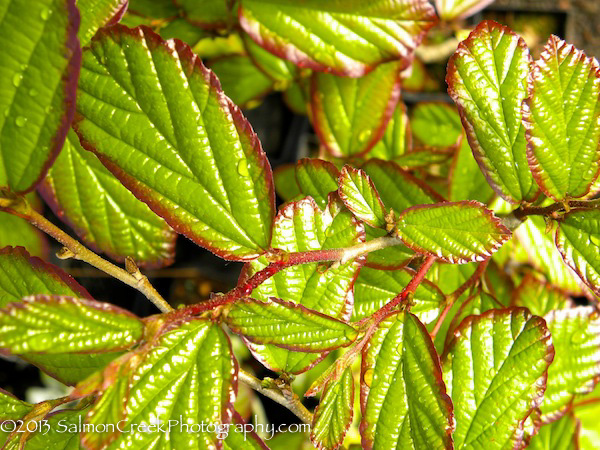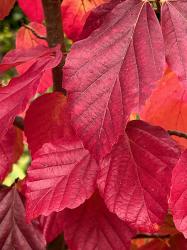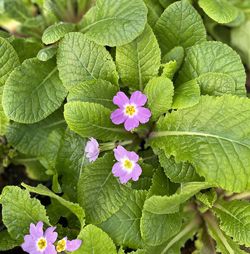

F. W. Parrot, who made the first ascent of Mt. Ararat in 1829, lends his name to this low-branched, round-headed deciduous Iranian native with remarkable landscape merit. In spring, the silver, green and cream-hued smooth bark is complemented by glistening green foliage and in autumn it’s highlighted by radiant gold, rosy-pink and crimson tones. Later, showy red stamens and woolly brown bracts create a reddish haze around bare limbs, crafting a virtual carousel of color and texture. Pest-free Persian Ironwood prefers well-drained soil and detests both overly wet or dry conditions. Grows moderately. 10´ in 6–8 yrs. Large Band.
Blooms March
Size: 15' 0" – 35' 0" high x 15' 0" – 30' 0" wide.
Hardy to zone 5.
Parrotia persica ‘Vanessa’ (T-0332)
Each $31.75

A versatile award-winning cultivar, ‘Vanessa’ offers year-round enticements. The tidy, upright-pyramidal habit is distinguished by close-knit branches clad with handsome deciduous foliage that boasts a splendid fall finale of brilliant red, gold, plum and tangerine shades. For winter appeal, exfoliating bark reveals gray, green and cream-hued tapestry-like patches, while bee-friendly maroon-colored flowers lend an overall intriguing aspect before the leaves appear. Whether embellishing beds, borders, cottage gardens or open woodlands as a showy specimen, it’s at home in modern, informal or traditional settings. This easy-care, pest-resistant tree appreciates sunny and well-drained, moderately fertile sites, yet endures dappled shade, variable soil types plus city pollution. 10´ in 6–8 yrs. Large Band.
Blooms March
Size: 15' 0" – 40' 0" high x 10' 0" – 20' 0" wide.
Hardy to zone 4.












